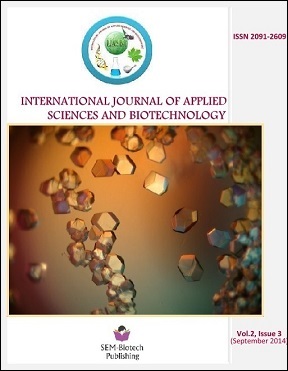Soil Properties Affected by Land Use Systems in Western Chitwan, Nepal
DOI:
https://doi.org/10.3126/ijasbt.v2i3.10660Keywords:
land use systems, soil properties, soil health, land management, conservation tillageAbstract
Field experiments were conducted in acidic soils of Mangalpur and Fulbari VDCs in western Chitwan, Nepal to study the effects of different land use systems on soil properties. Seven land use systems (cereal based lowland, cereal based upland, vegetable farm land, fruit orchard land, pasture land, forest land and farmer’s field) were used and they were replicated four times in randomized complete block designs. Composite soil samples were collected from each study sites and were analyzed in laboratory for soil physicochemical properties. The data obtained were analyzed using MSTAT-C. Soil properties were significantly affected by land use systems in western Chitwan condition. Soil organic matter and total soil nitrogen were significantly higher from pasture land (4.69 % and 0.23 %) and the lowest were from farmer’s field (2.40 % and 0.08 %). However, available soil phosphorous content was significantly higher from cereal based upland (448.3 kg ha-1) and it was the lowest from forest land (13.0 kg ha-1). Soil bulk density and pH were not significantly affected by land use systems. Since land use systems and management practices significantly affect soil physical and chemical properties, an appropriate and sustainable land use management option is necessary for fertile and healthy soil. Conservation tillage with the addition of sufficient organic inputs can be suggested based on this study to maintain soil health for sustained production and optimum activity of soil organisms under the western Chitwan land use systems.
DOI: http://dx.doi.org/10.3126/ijasbt.v2i3.10660
DOI: http://dx.doi.org/10.3126/ijasbt.v2i3.10660
Int J Appl Sci Biotechnol, Vol. 2(3): 265-269




